Old Maid
“Old Maid” card game manufactured by Chad Valley Co Ltd, mid-1950s.
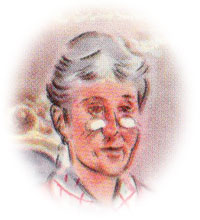
“Old Maid” is a Victorian family card game probably deriving from an old gambling game in which the loser pays for the drinks. It is known in Germany as Schwarzer Peter, in Sweden as Svarte Petter, in Denmark as Sorteper, in Hungary as Fekete Péter, in Finland as Musta Pekka (all meaning "Black Peter"). Chad Valley’s “Old Maid” game was published in the 1950s. All the cards are presented in a colourful style depicting various crafts, trades and professions. The object of the game is to form matching pairs of cards but to try to avoid being the player left holding the “Old Maid” card, who is the loser. In this edition the “Old Maid” is depicted as a grey-haired lady sitting knitting accompanied by her white cat. See the Rules→
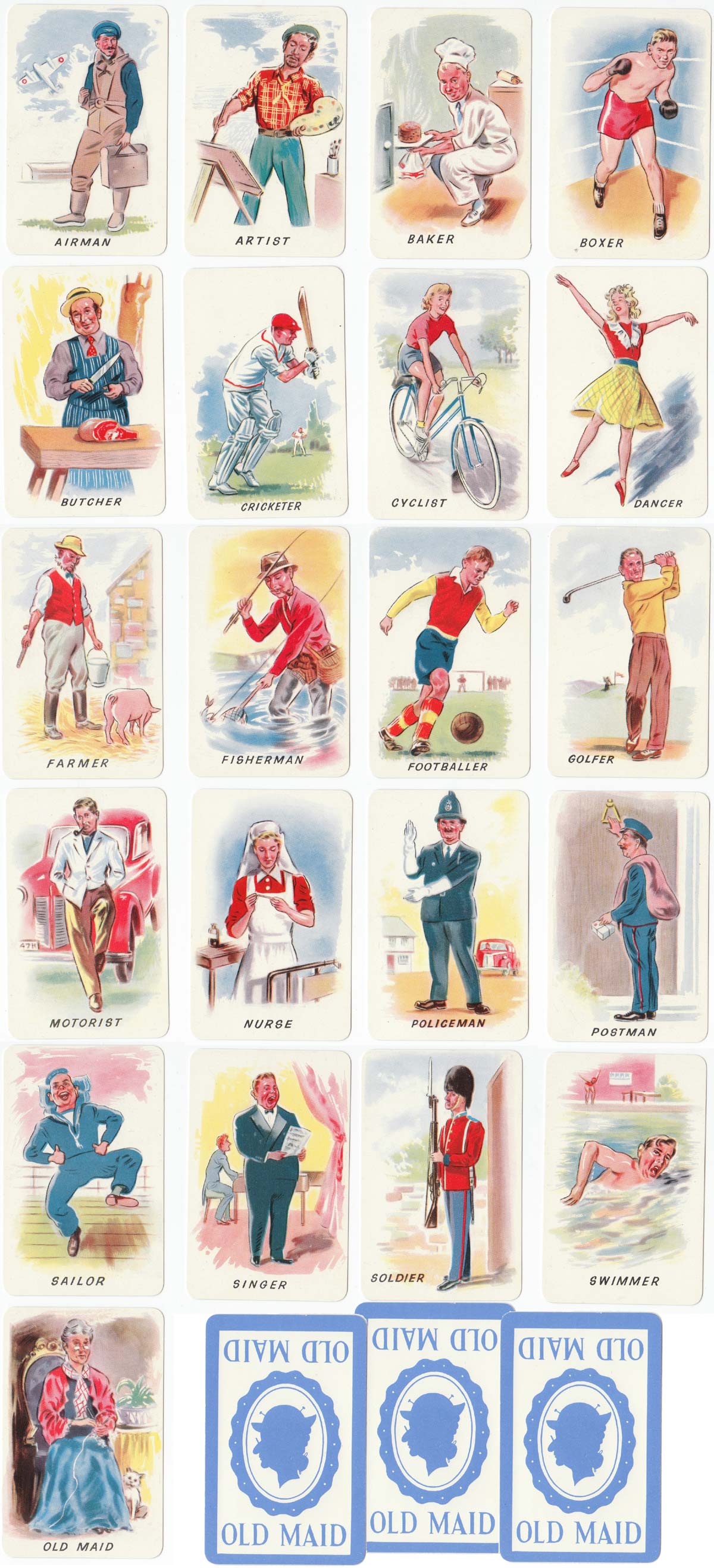
Above: “Old Maid” card game manufactured by Chad Valley Co Ltd, mid-1950s.
Chad Valley received a Royal Warrant in 1938. For the next fourteen years all Chad Valley Toys were marked “Toymakers to H. M. The Queen”. It was later amended to read “Toymakers to H. M. Queen Elizabeth the Queen Mother” when Princess Elizabeth became Queen in 1952. See the Boxes→
By Rex Pitts (1940-2021)
United Kingdom • Member since January 30, 2009
Rex's main interest was in card games, because, he said, they were cheap and easy to get hold of in his early days of collecting. He is well known for his extensive knowledge of Pepys games and his book is on the bookshelves of many.
His other interest was non-standard playing cards. He also had collections of sheet music, music CDs, models of London buses, London Transport timetables and maps and other objects that intrigued him.
Rex had a chequered career at school. He was expelled twice, on one occasion for smoking! Despite this he trained as a radio engineer and worked for the BBC in the World Service.
Later he moved into sales and worked for a firm that made all kinds of packaging, a job he enjoyed until his retirement. He became an expert on boxes and would always investigate those that held his cards. He could always recognize a box made for Pepys, which were the same as those of Alf Cooke’s Universal Playing Card Company, who printed the card games. This interest changed into an ability to make and mend boxes, which he did with great dexterity. He loved this kind of handicraft work.
His dexterity of hand and eye soon led to his making card games of his own design. He spent hours and hours carefully cutting them out and colouring them by hand.

Leave a Reply
Your Name
Just nowRelated Articles
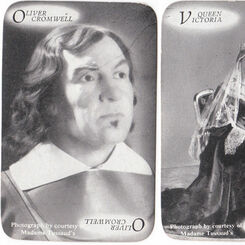
Have A Go
Have A Go card game published by Photo-Briton Ltd featuring photographs of waxwork figures from Mada...
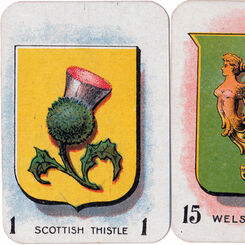
Blaze
“Blaze” was introduced just before Johnson Bros changed their name to Chad Valley Ltd, c.1920.
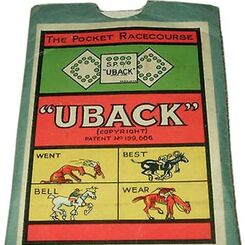
Uback
Uback horse racing game patent specification, Chad Valley Co Ltd, 1922.

Roberts Brothers Ltd, Gloucester
Roberts Brothers Ltd, Gloucester (Glevum Brand) ‘Old Maid’ card game, 1920s.

The Game of “Old Maid”
Two different editions of “The Game of Old Maid” by the Chad Valley Games Co.
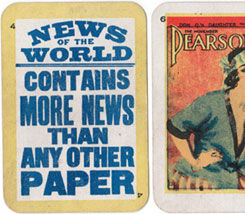
Fleet Street
“Fleet Street” card game published by Chad Valley Games, c.1923.

Zoo-Zoo
“Zoo-Zoo” card game published by Chad Valley games, c.1920s.
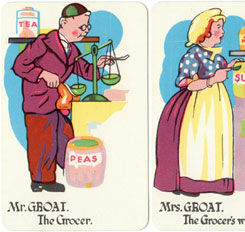
Happy Families, c.1950
Chad Valley “Happy Families” card game, c.1950.

Happy Families, c.1930
“Happy Families” game published by Chad Valley c.1930 drawn in the slightly grotesque style of the V...
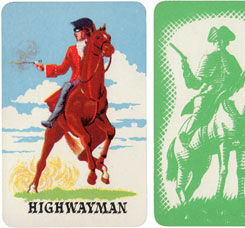
Highwayman
The game of “Highwayman” published by Chad Valley Company in c.1950 simulates travelling on old Coac...
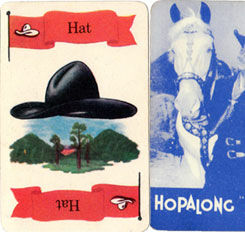
Hopalong Snap
‘Hopalong Cassidy Snap’ published by Chad Valley, 1950s.
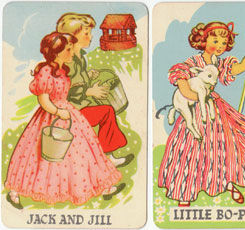
Nursery Rhyme Snap
Chad Valley ‘Nursery Rhyme Snap’ 1950, depicting ten popular nursery rhymes.
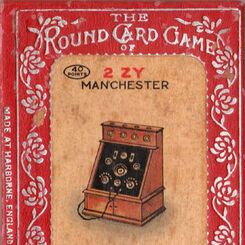
Sparx
‘Sparx’ card game, or ‘Listening In’, published by Chad Valley Games, c.1925.
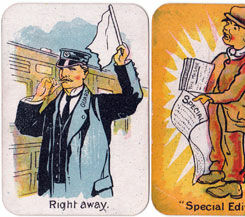
Special Edition Snap 1912
Chad Valley Special Edition ‘Snap’ card game, 1912.
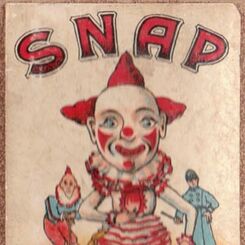
Snap 1930
Chad Valley ‘Pantomime Snap’ card game, 1930.
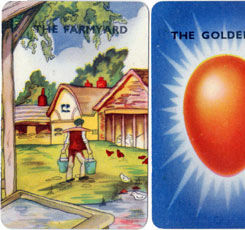
Golden Egg
Chad Valley “Golden Egg” card game.
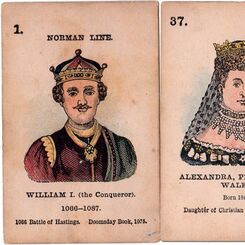
Royal Old Maid Game
This antique card game features English kings and queens from William the Conqueror to Queen Victori...

Old Maid
Old Maid by Clifford Toys

Old Maid No.5862
Tower Press Old Maid No.5862.
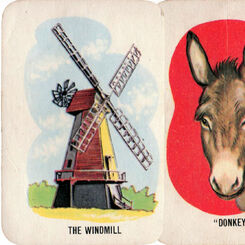
Tower Press Donkey 5863
Tower Press Donkey 5863.
Most Popular
Our top articles from the past 60 days


 Your comment here. Your comment here. Your comment here. Your comment here. Your comment here. Your comment here. Your comment here. Your comment here. Your comment here. Your comment here. Your comment here. Your comment here. Your comment here. Your comment here. Your comment here. Your comment here. Your comment here. Your comment here. Your comment here. Your comment here. Your comment here. Your comment here. Your comment here. Your comment here. Your comment here. Your comment here. Your comment here. Your comment here. Your comment here. Your comment here. Your comment here. Your comment here.
Your comment here. Your comment here. Your comment here. Your comment here. Your comment here. Your comment here. Your comment here. Your comment here. Your comment here. Your comment here. Your comment here. Your comment here. Your comment here. Your comment here. Your comment here. Your comment here. Your comment here. Your comment here. Your comment here. Your comment here. Your comment here. Your comment here. Your comment here. Your comment here. Your comment here. Your comment here. Your comment here. Your comment here. Your comment here. Your comment here. Your comment here. Your comment here.




















